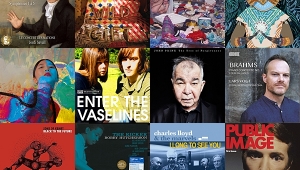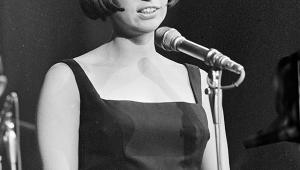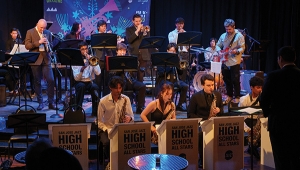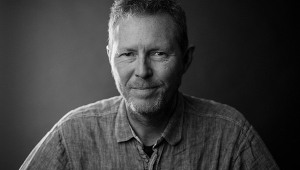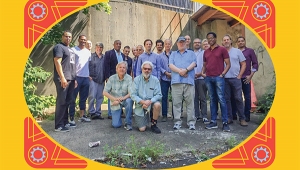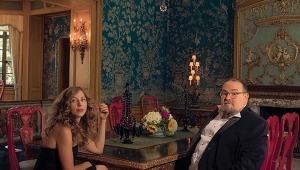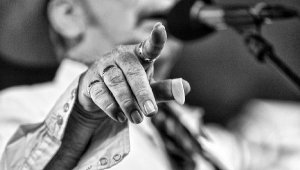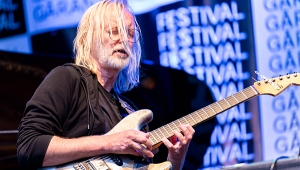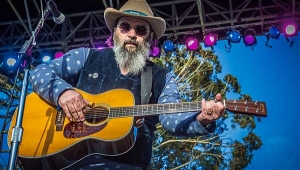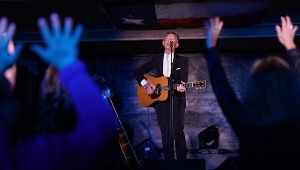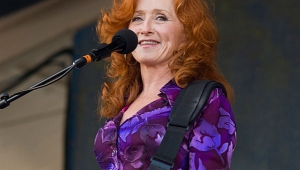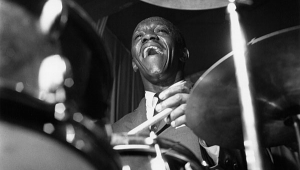| Columns Retired Columns & Blogs |
Project K622 Page 2
The recording venue was going to be Henry Wood Hall in Southwark, just across the river from the Tower. Henry Wood Hall was originally Holy Trinity Church, standing in the center of a classic early 19th-century London square. Closed in 1961, the church was transformed into a rehearsal and recording space for London orchestras in the 1970s, and opened for business in 1975. Tony Faulkner has used the hall, named after fabled 19th century conductor and impresario Henry Wood, as a base for his operations for a quarter century. After the project had been finished and Antony had signed off on the masters, I asked Tony if his selection of mikes and techniques had differed at all from his normal practice for this project.
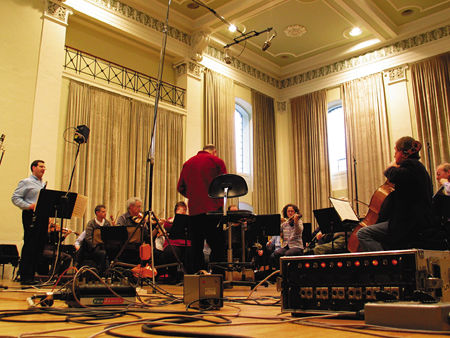
Tony Faulkner: I worked first in Henry Wood Hall in 1977 or 1978, when I was recording manager for Enigma Records, and it has always been one of my very favorite locations. Although it was originally a church, the reverberation is under control, and is not long and bright, like some of the more cathedralesque churches used for recording. It is also pretty quiet as far as external traffic noise is concerned.
Acoustically, HWH has the feel of a movie soundstage, but with a bit more space and warmth to its sound quality. The Hall's character is warm and slightly studio-ish with a medium- or large-size orchestra. As with most halls with "character," as an engineer you either love the character and make the best of it, or you fight it (and usually lose) with a combination of too many microphones, digital reverberation, and paranoia. I choose the former route!
John Atkinson: The photos show that your main pickup for the orchestra was a spaced pair of vintage tubed Neumann omnis.
Faulkner: For Antony's recording I followed the same practices I would normally use out of preference in the Hall, although the specifics always vary a bit from project to project. In this case I used a very simple technique consisting of a main pair of Neumann M50c's (bought originally from RCA in New York and part of the original Lewis Layton rig) placed about 9' 6" above the floor, a little way behind the conductor. The M50s were not really "spaced" in the traditional sense. To most recording engineers, "spaced omnis" would mean a spacing of many feet, and probably three rather than two microphones—used either in a wide row or in a Decca-style "Tree" arrangement. Here I used a phased array of two M50s spaced around 27" apart on a wide AEA stereo bar—the conductor did the balancing for me!
 Atkinson: I can remember you writing something years ago about the 27" separation having special properties. I remember that was the mike spacing you used for the Handel Queen of Sheba on the first Hi-Fi News Test CD, which I co-produced back in 1985.
Atkinson: I can remember you writing something years ago about the 27" separation having special properties. I remember that was the mike spacing you used for the Handel Queen of Sheba on the first Hi-Fi News Test CD, which I co-produced back in 1985.
Faulkner: One always tries to reason why certain things work. I would hate to come over as some kind of waffler re. 27" or otherwise. I have always favored using relatively small interspacing between microphone capsules; ie, spacing the main mikes on a bar rather than 10' or more apart on separate stands.
If figure-8 capsules are angled at 90 degrees, I like them as coincident as possible. If the figure-8 capsules are parallel, I use the "phased-array" arrangement of a few inches' spacing. With cardioids, the spacing I like is different again, and there is, of course, the famous technique from ORTF that follows the same concept. With subcardioids, for me the spacing increases, while with omnis the spacing increases to around 27".
I think the spacing has to increase because we are battling against too much sense of "in-phase" in the critical frequency area where the ear-brain combination is switching between timing-phase and amplitude methods of determining source position. With omnis spaced, say, 6" apart, the timing-phase-amplitude differences would be too small to relate with what the human ear spacing normally works with, and I would have to use some kind of intervening processing to modify the difference signal. (There is such a system described in the 1931 Blumlein stereo patent.)
 Too much thinking—most of this has evolved from trial and error.
Too much thinking—most of this has evolved from trial and error.
Atkinson: As can be seen in Jimmy Hughes' photos, you used a close-placed stereo AKG C24 for Antony's clarinet. I assume this was in crossed-coincident figure-8 mode. Why did you place soloist and mike to the side of the conductor rather than centrally, where the image was placed in your mix?
Faulkner: The physical positioning of the soloist was determined principally by musical considerations. In a live concert situation, the soloist would normally be at the front of the stage, situated between the conductor and concertmaster, in front of both of them, looking out into the audience with his/her back to the orchestra. With recording the situation is different, and there are many musical advantages for the soloist to be able to see both the conductor and the orchestral musicians.
I could have asked Antony to stand directly in front of the conductor between the second violins and violas, but that is a strange place to be for a wind player. So the position I chose for Antony was standing not so far from the concertmaster, playing back into the conductor. Orchestra and soloist can also hear each other more clearly if the soloist is playing back into the orchestra.
Having placed Antony to get the best musical contact and effect, the main microphones would hear quite a lot of the soloist, but probably not quite focused or loud enough unless the soloist forced his sound. Also, the stereo image from the main pair would place the soloist a bit too wide on the left. So I added enough C24—I guess around -23dB—to move him across closer to the center of the recorded soundstage, as well as to add a small amount of presence. Using a stereo microphone like a C24 rather than a single mono mike gives me, as engineer, more flexibility in minimizing that typical pasted-on mono quality of a single spot microphone.
Atkinson: How did you deal with the bleedthrough from the orchestra to the clarinet mike?

Faulkner: I did as per usual—lie back and enjoy it! You just listen to the overall effect and make adjustments until the project is ready to roll. In a live acoustic there is always a lot of bleedthrough, and the engineer must accept it as a fact of life. You can fight it and try using screens or closer microphones, but doing so wastes a lot of time and irritates musicians, who want to get on with playing. And it will still be there whether you like it or not.
Atkinson: You also used Schoeps spot mikes on the winds. What sort of level did you use for these mikes?
Faulkner: These were placed principally just in case we needed them. In an empty hall, the back of the orchestra, especially horns and bassoons, can sometimes become a bit foggy when picked up by just a main pair of omnis. The wind mikes would have been around -26dB or -30dB. If I had turned them off, the musical balance would not have been changed dramatically, there would simply be a bit less focus.
Atkinson: Your mike preamps were tubed EAR 824Ms, a favorite of mine. What mixing console did you use? It looked like something from the golden age of recording.
 Faulkner: It was a tubed line-in/line-out console hand-built by Tim de Paravicini [of EAR]. Lovely, big sound, but heavy, and only beautiful to people like you and me—and to Tim, of course.
Faulkner: It was a tubed line-in/line-out console hand-built by Tim de Paravicini [of EAR]. Lovely, big sound, but heavy, and only beautiful to people like you and me—and to Tim, of course.
Atkinson: Did this session mark a return to analog recording for you?
Faulkner: Not really. I used to do 30ips analog recording on an Ampex ATR100 at Skywalker Ranch for Harmonia Mundi USA, and it sounded great so long as you did not mind changing tape reels every 10 or 15 minutes. However, this was the first session in 20 years where I had do the editing with a razor blade—that was by far the worst adjustment!
For Antony's sessions I used a ¼" Studer A80RC machine that I bought off eBay last year—it was originally part of the BBC Cardiff setup, with low hours and in excellent condition. Tim de Paravicini did some excellent modifications, including changing the record/replay time constant to 17.5µs at 15ips, removing some bandwidth filtering, improving the headroom, and installing a narrow guard-band replay head.
- Log in or register to post comments
